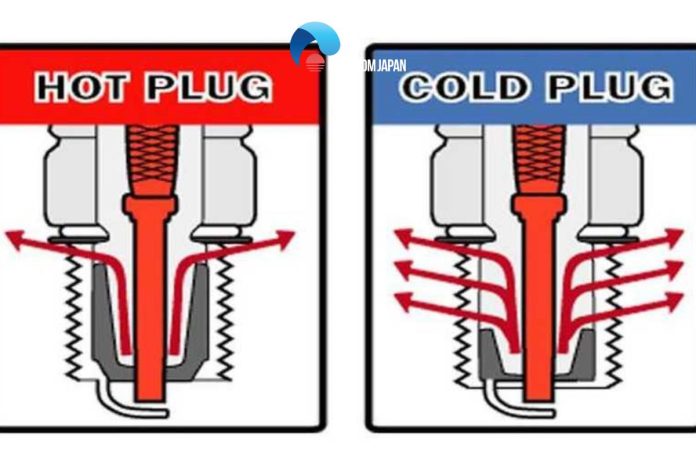You may usually ignite the compressed fuel/air mixture by a spark plug, but do you really understand the spark plug heat range?
To make things easier and to help you understand that basic term, we are now introducing to you the definition of the heat range and how it affects your engine and how to use it correctly.
Contents
- What Is The Spark Plug Heat Range?
- What Is Hot Spark Plug and Cold Spark Plug?
- What Happens If The Heat Range Is Too High Or Too Low?
- Heat Range Reference Chart
- Basic Heat Range Guideline
- FAQs on Spark Plug Heat Range
- Why do race engines often use colder spark plugs than street cars?
- Is it possible to read a spark plug to determine if the heat range is correct?
- Why do some manufacturers label spark plug heat ranges in reverse order?
- Can the wrong heat range trigger a check engine light?
- Is changing heat range a quick fix for detonation?
- Final Thought
What Is The Spark Plug Heat Range?
Spark plug heat range is the speed at which a spark plug can transfer heat from the firing tip to the cylinder head water jacket and into the cooling system.
The heat ranges can vary massively from plug to plug, and can be recorded in a number of different ways, making comparison between brands rather hard.
If the spark plug is too hot, your engine could experience detonation, pre-ignition, or power loss.
If the spark plug is too cold, it will be unable to properly self-clean by burning off carbon deposits. So choosing the right heat range is crucial for high performance engines.
Usually, spark plug manufacturers recommend that the tips temperature remain around 500 – 850 celsius degrees. The heat range numbering system used by spark plug manufacturers is not universal.
Some manufacturers numbering systems are opposite the other – for Champion, Autolite and Bosch, the higher the number, the hotter the plug. However, for NGK, the higher the number, the colder the plug.
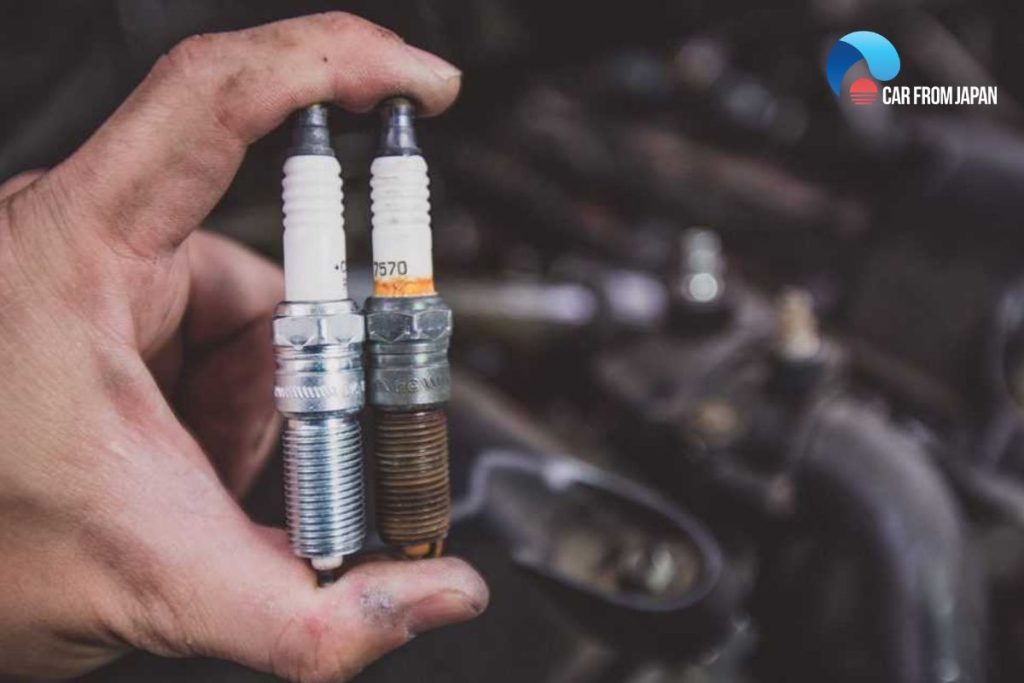
What Is Hot Spark Plug and Cold Spark Plug?
Each spark plug manufacturer designs the heat range with a number. Typically the heat range for NGK Spark Plugs varies from 2-11.
In broad terms, spark plugs are often referred to as the term hot spark plug or cold spark plug.
Hot Spark Plug
A hot spark plug is a plug which transfers heat slowly from the firing tip into the engine head, keeping the firing tip hotter.
Detonation (engine knocking) or disintegrate centre electrodes are too hot spark plug symptoms. Hot plugs are good for applications that operate mainly at low rpms.
Because they have a longer insulator nose length, heat is transferred from the firing tip to the cooling system at a slower pace.
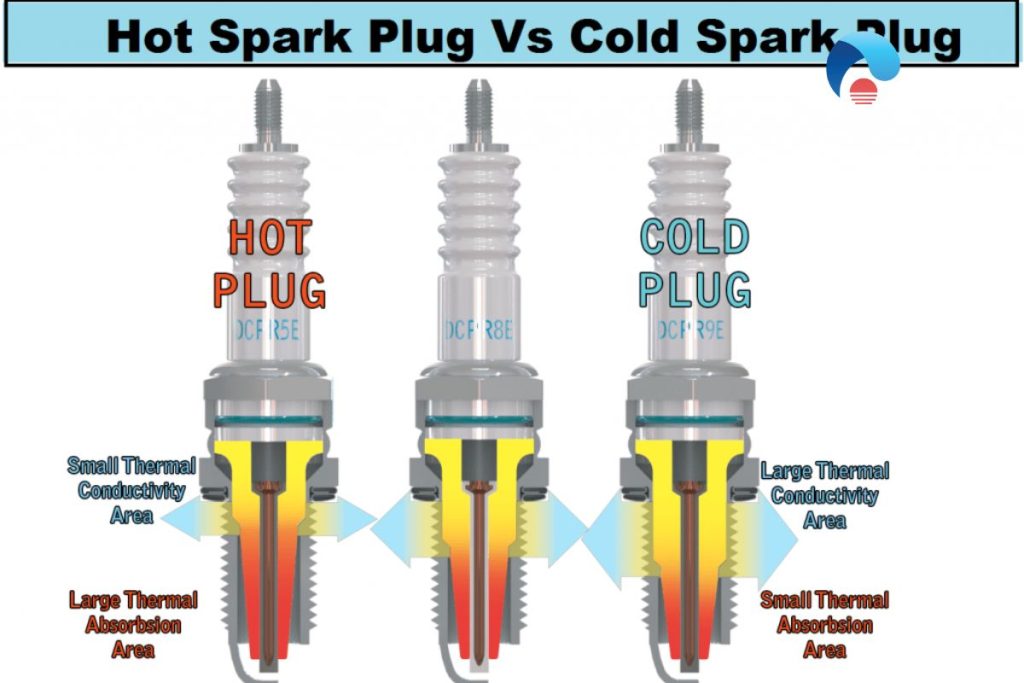
Cold Spark Plug
A cold spark plug is a plug which conducts more heat out of the spark plug tip and lowers the tip’s temperature.
Cold plugs are ideal for high rpm engines, forced induction applications, and other instances where the engine produces high operating temperatures.
Whether a spark plug is hot or cold is known as the heat range of the spark plug.
See More: How To Gap Spark Plugs: Explained In Simple Steps
What Happens If The Heat Range Is Too High Or Too Low?
Heat Range Is Too High
Although not as damaging as having a too low rated plug, the effects can still be detrimental to your engine.
If a spark plugs temperature remains too low it can cause loss of ignition spark due to deposit build up on the firing end, which in turn will leave your engine struggling / down on power.
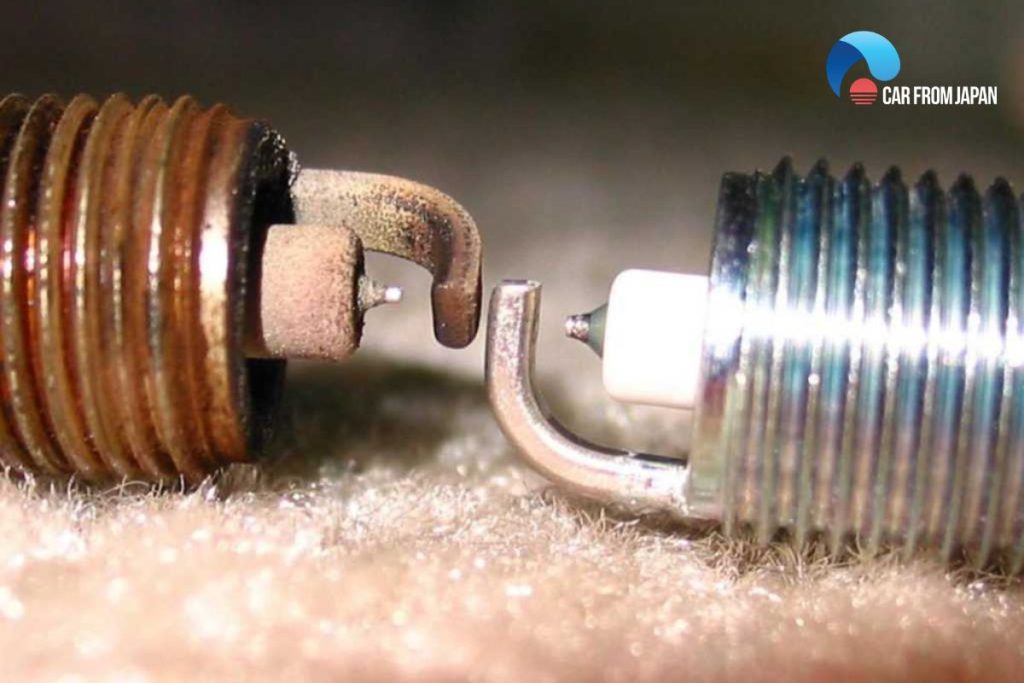
Heat range Is Too Low
When the heat range is too low, it can be very damaging to your vehicle’s engine as the plug will overheat causing abnormal ignition firing (pre-ignition), that can lead to melting of the spark plug electrodes as well as piston seizure and erosion.
The brief of rule
- Low power engines – low heat range or hot spark plug
- High power engines – high heat range or cold spark plug
Heat Range Reference Chart
As we mention above, the heat range for NGK spark plugs varies from 2-11. Let’s take a look on the heat range chart where there is full information about the number.
You will have the basic understanding whether it is a hot or cold spark plug of 5 majors spark plug brands.
Having to change a new spark plug is a pain, but you definitely need to know what kind of hot or cold spark do you need and at which rate.
So everytime you wonder “what heat range spark plug should I use”, take a look at this chart and you will figure it out!
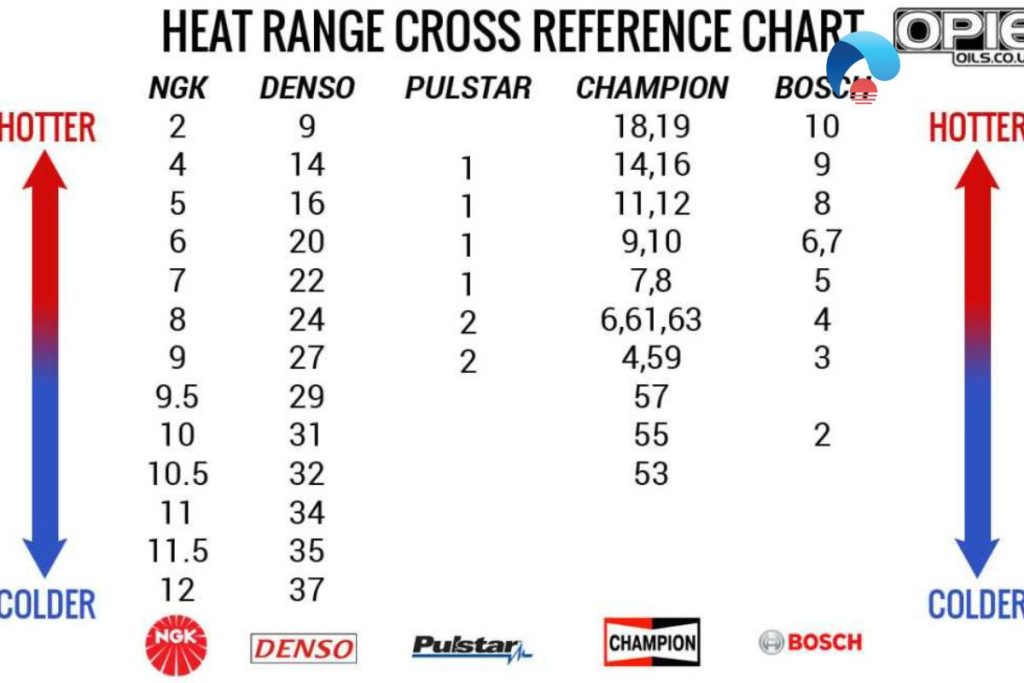
Basic Heat Range Guideline
Nitrous oxide
Nitrous oxide is the factor that causes the high cylinder temperatures. Therefore it requires a colder heat range over the stock plug.
Methanol
Metanon is figured out that it has a higher level of octane than the standard gasoline, methanol delivers more complete combustion. By that, you may need a colder plug to transfer more heat from the combustion chamber.
Air/fuel mixture modifications
Lean air/fuel mixtures raise the operating temperature, along with the plug tip temperature, possibly causing knock or pre-ignition. You should use a colder heat range for leaner air/fuel mixtures.
Since rich air/fuel mixtures can cause the plug temperature to dip, allowing carbon deposits to build up on the tip, you should use a hotter heat range for rich air/fuel mixtures.
Prolonged acceleration/high speed driving
Frequent and drawn-out acceleration and high-rpm driving raises combustion temperatures and generally requires a colder heat range.
Advanced ignition timing
Generally, advanced ignition timing raises the spark plug temperature. In fact, NGK estimates an increase of 70° to 100° for every 10° advance in ignition timing. Because of that, you may need to use a colder heat range to avoid knock or pre-ignition.
Increased compression ratio
Higher compression ratios mean higher cylinder pressure and temperature. And again, you may need a colder heat range to rapidly transfer all that extra heat to the cooling system.
Supercharging/turbocharging
Supercharging forced induction leads to augmented cylinder pressure and temperature, which could lead to detonation.
Depending on the exact application, you may need to go with a significantly colder heat range overstock.
FAQs on Spark Plug Heat Range
Why do race engines often use colder spark plugs than street cars?
High-performance engines generate more combustion heat, so colder plugs help prevent the plug tip from overheating under extreme loads.
Is it possible to read a spark plug to determine if the heat range is correct?
Yes. A tan/gray insulator usually indicates the right range; white means too hot, black and sooty means too cold.
Why do some manufacturers label spark plug heat ranges in reverse order?
Heat range numbering isn’t standardized. NGK’s higher numbers mean colder plugs, while Denso’s lower numbers mean colder plugs.
Can the wrong heat range trigger a check engine light?
Indirectly. A plug that fouls or misfires due to incorrect heat range can cause the ECU to log misfire codes.
Is changing heat range a quick fix for detonation?
It can help, but it’s not a cure! Detonation usually needs a deeper fix, like adjusting ignition timing, air/fuel ratio, or cooling.
Final Thought
Equip yourself with the knowledge about the spark plug heat range before changing it will help you avoid any serious damage for your car.
Don’t forget to follow our maintenance tips for better understanding your car and learn how to fix it when you need.

